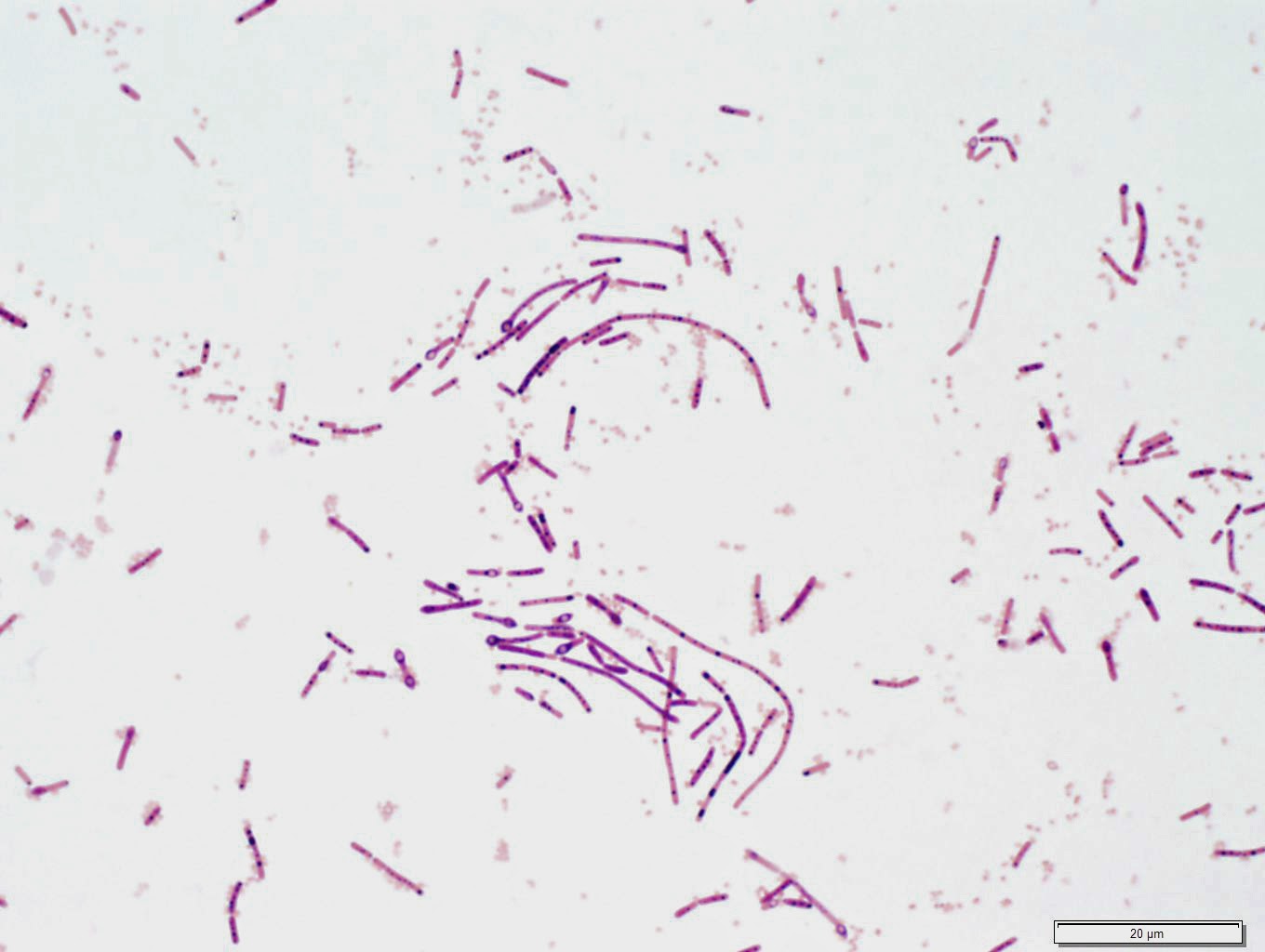
Using a standard light microscope, the following video was captured using the 10x objective (100x total magnification):
Note that there is subtle movement in these filamentous structures (the choppiness is an artifact of my video camera).
To further investigate this, we performed a Gram stain of material taken from the fringed edge:
Gram at 100x
Gram at 1000x
Identification? Suggested further work-up?








10 comments:
Looks like yeast or fungi. I'm not sure whether further workup is needed, if so, I would consider a fungal culture.
The Gram stain smears showed Gram positive bacilli with square ends suggestive of Bacillus species. In a stool culture which shows almost pure growth of Bacillus species, this may reflect a diarrheal condition caused by B. cereus or other species of Bacillus such as B. anthracis, B. mycoides and B. thuringiensis.
A bacterial work up for pathogenic Bacillus sp. would be suggested.
Perhaps a curious find is that B. thuringiensis is sold at most Garden Centers as a natural biologic insect fighting tool along with other chemical insecticides.
Florida Fan
The strands are definitely fungal in orgin, the gram stain at x1000 show clearly the prescence of multinucleate hyphae, filimentous rods, and budding 'yeast' fungal forms ( I think this is called pseudohyphae where budding forms appear with rods).
Was this patient immunocompromised? Strongyloides stercolarils hyperinfection is a cause of concearn in some HIV patients - was this the concern for the purpose of the original smear? If so, a diagnosis of Candidia albicans could be considered. This is also an opportunistic infection affecting particularly the immunocompromised patient. Like I think the Fungus here is (though im not 100% sure about this as some of the hyphae look pinkish rather than pruple/blue in the first x1000 image), C. albicans turns up gram positive after staining and can be found in stool samples.
C. albicans exists in the environment and as such, is mainly a concern when cultured from samples which should be sterile, such as blood, as on the skin or in the digestive tract, C. albicans may be fgound even in healthy patients. Follow up for this case could include a blood smear culture to assess severity of the infection, in addition to molecular diagnosis for C. albicans such as by PCR or using convenient commercially available kits for detection of C. albicans metabolites such as Beta-glucan.
The video was taken from the surface of the plate? If so that must by the Strongyloides swimming around the agar surface... yuck!
The Gram stains of the bacteria worry/confuse me. They appear to be over decolorized Gram Positive Bacilli like a Bacillus sp.(with plenty of smaller enterobacteriaceae too). The last Gram Stain looks like the GPBs have terminal spores, like Clostridium tetani, but if it was grown at ambient air that would be unlikely.
One characteristic of the fungi is that they have true dividing walls or septations if they are in their mould form.
If the fungus is in its yeast form, we should see the budding daughter cells. One common saying among mycologists:"No bud, no yeast". We also need to be aware that some yeast forms of Candida albicans as well as Candida tropicalis and Trichosporon species do exhibit true hyphae and pseudohyphae at the same time.
The organism pictured did not show any septation nor budding and thus do not belong to the fungi.
Florida Fan
I think Bacillus as well. R/O enterotoxin...but if that were the case, the patient would long be better.
Lee
I think I see gram positive rods with subterminal spores. From a stool plate, could there be Clostridium difficile? I'm not sure about how to work that up; grow anaerobically, test for catalase, plate on egg yolk agar to verify negative lecithinase from C. perfringens.
well after a bit more research and looking at the consensus, I think i'm wrong! Does look like Bacillus after all, I didnt realize they could look like this! cooool.
I've learned a lot from the comments. Looking forward for the answer. Thank you everybody.
Wan Hafiz
Post a Comment